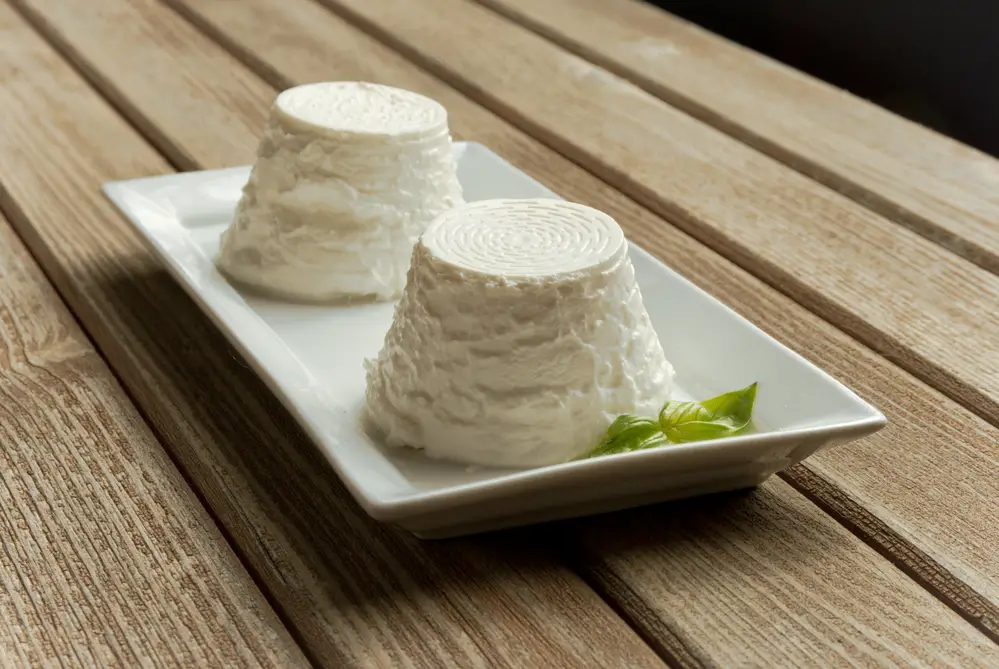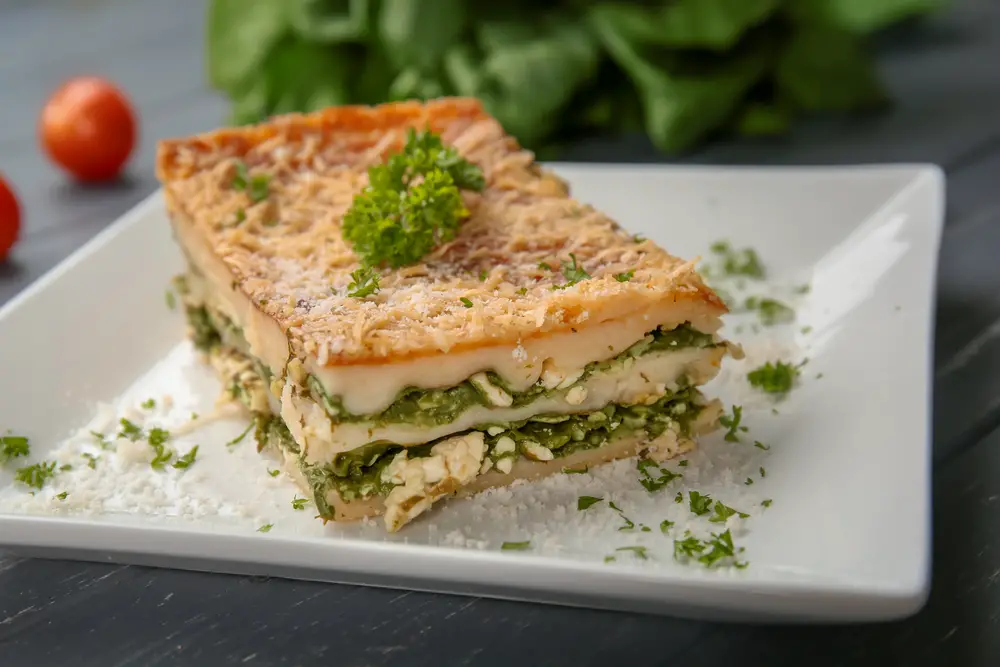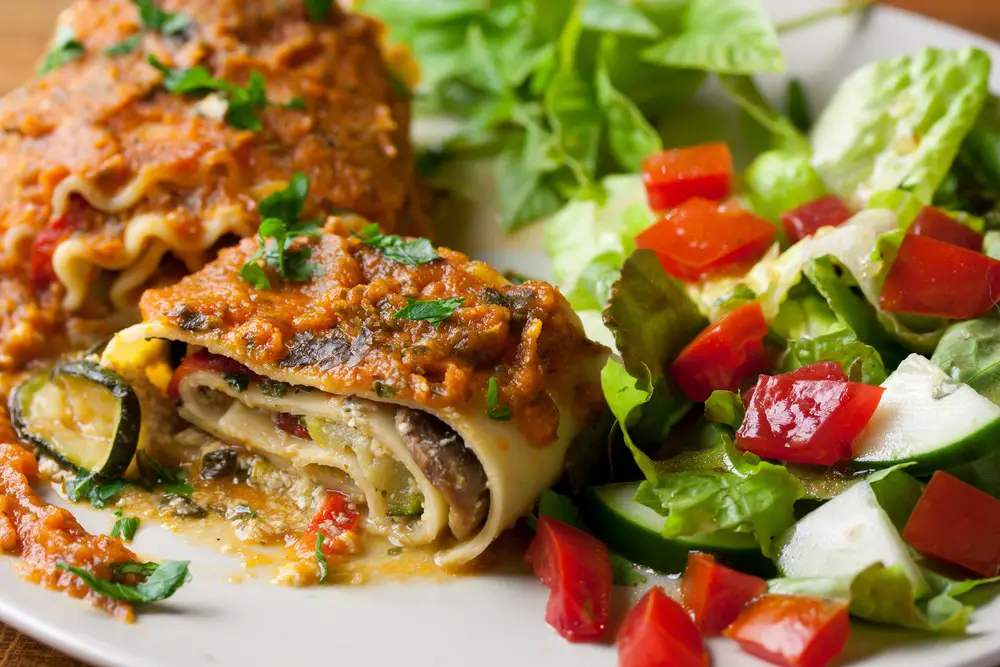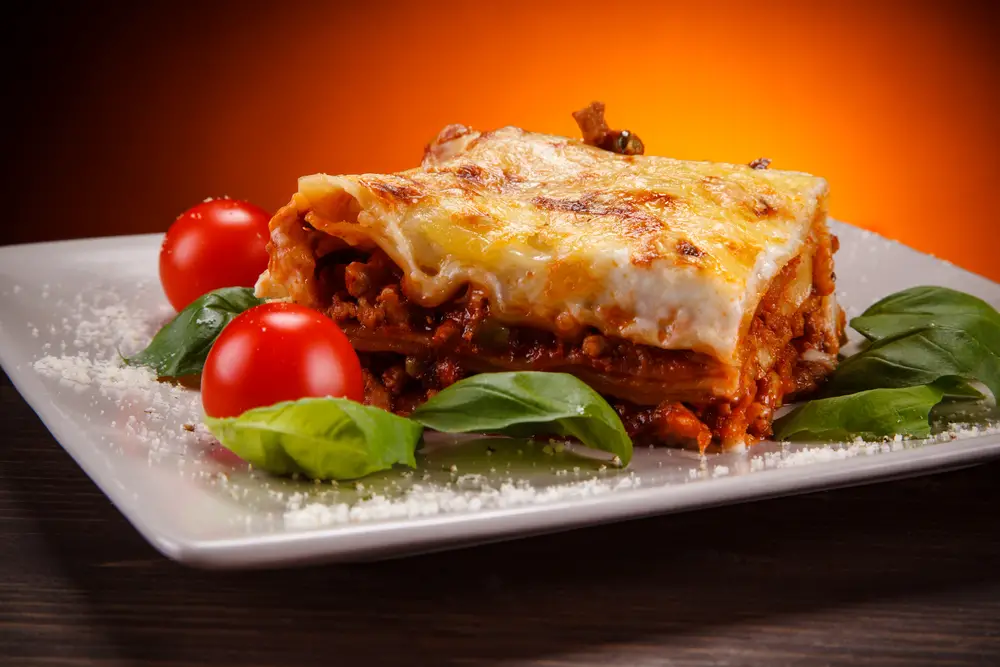Ricotta cheese is the creamy, fluffy secret behind many classic lasagna recipes—a dish cherished for its rich flavors and comforting qualities. Crafting a delicious ricotta mixture for your lasagna not only adds a velvety layer of cheese but also acts as a delightful contrast to the robustness of the tomato sauce and the tenderness of the pasta sheets. It’s important to approach this element with care, as it can elevate your lasagna from good to unforgettable.
When preparing a ricotta mixture for lasagna, it’s essential to choose high-quality ingredients. Opting for a plant-based ricotta can ensure your meal is inclusive, satisfying both vegan and non-vegan palates. You’ll want to blend the ricotta with complementary flavors like nutritional yeast or vegan parmesan to add a cheesy depth, and seasonings such as garlic powder, basil, and oregano to enhance the overall taste profile. Remember to keep the mixture moist but not watery so that it spreads easily and maintains the structure of the lasagna.
Assembling your lasagna is an exercise in patience and layering. Spread a scoop of the ricotta mixture evenly over each pasta sheet, inviting the flavors to meld together harmoniously during the baking process. This cheese layer acts as a soft bed that supports the other ingredients, providing a smooth transition between the pasta and the vegetable layers. It’s this meticulous attention to each layer that promises a lasagna that is both comforting and complex in flavor.
Key Takeaways
- Opt for plant-based ricotta to create an inclusive, vegan-friendly lasagna layer.
- Season the ricotta mixture well and maintain a balance between moisture and firmness.
- Evenly layer the ricotta mixture in your lasagna for a delicious, creamy texture.
 Understanding Ricotta Cheese
Understanding Ricotta Cheese
Ricotta cheese plays a pivotal role in crafting a delicious lasagna. With its creamy texture and delicate flavor, it’s essential to understand its background and the varieties available to make informed choices for your culinary creations.
History and Origin
Ricotta has a rich heritage rooted in Italian cuisine, where it was traditionally made from the whey left over after producing other cheeses, like mozzarella. This whey cheese is heated until the remaining proteins coagulate, forming the soft, fluffy ricotta you know and love. This cheese-making method maximizes efficiency, leaving no waste behind, which aligns beautifully with today’s sustainable cooking principles.
- Main Ingredient: Whey from sheep, cow, goat, or Italian water buffalo milk
Ricotta Varieties
While classic ricotta is made from whole milk, not all versions align with a vegan lifestyle. Nonetheless, vegan-friendly alternatives capture the essence of traditional ricotta without using any animal products. Let’s take a closer look:
- Whole Milk Ricotta: Creamy and rich, often used in traditional recipes
- Vegan Ricotta Alternatives:
- Based on almonds, soy, or coconut
- Nutritionally varied and can be lower in calories and fat
- Designed to mimic the texture and taste of dairy ricotta
Here are a few points to guide you:
- Nutrition Insight: When reaching for ricotta, note that the traditional whole milk variety is high in protein but carries more calories and fat. Vegan alternatives can offer lighter options.
- Taste Test: Vegan ricottas have unique flavors, which can enhance your dish differently. Don’t be afraid to experiment to find your favorite blend.
Key Takeaway: Your lasagna can still boast that creamy, indulgent layer with vegan ricotta – it’s all about finding the perfect plant-based substitute that satisfies your taste buds while aligning with your dietary choices.
 Essential Ingredients for Lasagna
Essential Ingredients for Lasagna
Selecting top-notch ingredients is crucial when you set out to create a mouthwatering lasagna. You aim for a balance of flavors and textures that harmonize harmoniously in every layer.
Cheese Assortment
Lasagna’s hallmark is its cheese. Traditionally, you’ll need:
- Mozzarella: For that sublime meltiness.
- Ricotta: Adds a rich, creamy layer.
- Parmesan: Imparts a sharp, salty kick.
For a vegan twist, opt for plant-based cheese varieties that mimic these characteristics.
Choosing the Right Pasta
The foundation of any lasagna is the pasta; it should be sturdy enough to hold layers and flavors.
- Lasagna Noodles: Classic, flat noodles with ridges to catch all the sauce.
To keep it vegan, seek out egg-free pasta options, such as those made with:
- Durum wheat
- Water
- Salt
Key Takeaway: A perfect lasagna is a symphony of quality cheese or cheese alternatives, coupled with the ideal pasta, setting the stage for an unforgettable meal.
Preparation Basics
Creating a delectable vegan lasagna starts with two foundational components: perfectly hydrated noodles and a rich, flavorful ricotta cheese mixture crafted from plant-based ingredients.
Hydrating Pasta
- Prep Time: approximately 30 minutes
- Total Time: varies depending on pasta type
To ensure your lasagna noodles are just right, follow these steps:
- Boiling: Fill a large pot with water and bring it to a boil. Add a pinch of salt if desired.
- Cooking: Place your lasagna noodles in the boiling water. Cook until al dente—firm to the bite, usually around 8-10 minutes.
- Rinsing: Drain the noodles and rinse with cool water to stop the cooking process.
Key Takeaway: Rinsing the pasta after boiling can prevent the noodles from sticking together and becoming too soft.
Ricotta Cheese Mixture
- Servings: may vary based on lasagna size
- Tool: medium bowl for mixing
To create your vegan ricotta mixture, do the following:
- Ingredients: Combine in a medium bowl the following vegan ingredients:
- 1 block of firm tofu, crumbled
- Nutritional yeast for a cheesy flavor
- A dash of salt and pepper
- Your choice of herbs, such as basil or oregano for added depth
- Binding: Add in 1 flaxseed egg (1 tbsp ground flaxseed mixed with 3 tbsp water, left to sit for 5 minutes) to bind the mixture together.
- Mixing: Stir thoroughly until the mixture is well combined and has a creamy consistency akin to traditional ricotta.
Key Takeaway: The flaxseed egg will bind your ingredients and contribute to the mixture’s rich texture.
Remember, your oven should be preheated to the temperature the lasagna recipe requires, typically between 375°F to 425°F (190°C to 220°C). Enjoy building layers with your well-prepared pasta and indulgent plant-based ricotta!

Creating the Perfect Cheese Layer
Your lasagna will level up with this delectable cheese layer guide that’s friendly to all eaters, including those who embrace a vegan lifestyle.
Blending Cheeses
To create a rich, creamy, dairy-free ricotta cheese mixture, start by blending a high-quality vegan ricotta with a generous handful of shredded vegan mozzarella. This combination ensures a creamy texture with that perfect stretch:
- Vegan Ricotta: 1 cup
- Shredded Vegan Mozzarella: 1/2 cup
Key Takeaway: Combining vegan ricotta with mozzarella yields a creamy layer with pleasant elasticity, making your lasagna indulgently satisfying.
Spices and Seasonings
Spices and seasonings are the heartbeat of your cheese layer, infusing it with aromatic Italian flair. Be sure to incorporate these:
- Black Pepper: A pinch for a subtle heat kick.
- Italian Seasoning: 1 teaspoon to imbue classic herby undertones.
- Parsley: Fresh, finely chopped for a bright, verdant pop.
- Basil: Also fresh and finely chopped to add a sweet and peppery aroma.
As you mix these into your ricotta blend, the aromas alone will transport you to an Italian grandmother’s kitchen.
Key Takeaway: Don’t skimp on seasonings—these herbal notes make the cheese layer a filling and a signature component of your dish.
Lasagna Assembly
Crafting the perfect lasagna involves precise layering, ensuring each mouthful is a harmonious blend of flavors and textures. Here’s how you make sure your lasagna assembly is spot on.
Layering Techniques
You’ll need your baking dish, a spoon, and vegan lasagna ingredients: noodles, vegan ricotta mixture, meatless sauce, and vegan cheese. When layering lasagna, it’s all about balance.
- First Layer: Spread a thin layer of your meatless sauce (marinara or a vegan Bolognese) on the bottom of the dish. This keeps the noodles from sticking.
- Second Layer: Place lasagna noodles side by side, covering the sauce. For the noodles, you can use no-boil lasagna sheets or pre-cooked noodles.
- Third Layer: Dollop and spread your flavorful vegan ricotta mixture on top of the noodles. Don’t skimp on this—it’s what gives the lasagna its creamy texture.
- Fourth Layer: Here comes the cheese layer. Sprinkle your chosen vegan cheese evenly.
- Fifth Layer: Add another layer of sauce and repeat the order until the dish is nearly full.
Remember, your top layer should be a generous helping of sauce covered by a sprinkle of vegan cheese to achieve that iconic golden-brown finish. Aim for at least three or four total sets of layers, ending with sauce and cheese.
Key Takeaway: An even distribution of each component is crucial for a lasagna that tastes great and holds together when served.
Final Touches
Before you pop your masterpiece into the oven, here’s how to add those final flourishes:
- Sauce on Top: Finish with a layer of sauce to prevent the top from drying out.
- Wrap it Up: Cover the dish with aluminum foil, but don’t let it touch the cheese to avoid sticking.
- Baking Temperature: Bake at 375°F (190°C) if using pre-cooked noodles, or follow the temperature guide in your specific lasagna recipe for no-boil noodles.
- Let it Rest: After baking, rest for about 15 minutes. This allows the lasagna to settle, making slicing easier.
Key Takeaway: These finishing details ensure a moist, evenly cooked lasagna that looks as good as it tastes. Happy baking, and get ready to savor your vegan creation!
Cooking Instructions
Crafting a delicious vegan lasagna requires a delicate touch, especially when preparing your ricotta mixture. Careful attention to the oven preparation and baking time ensures a delightful result that will impress you.
Oven Preparation
First things first, you’re going to want to preheat your oven. Ensure it’s hot and ready for your lasagna by setting it to a cozy 375°F (190°C). While warming up, take an oven-safe dish and lightly grease it with olive oil or a vegan-friendly alternative. This step prevents sticking and helps achieve that coveted golden-brown finish.
Next, spoon in your first layer of vegan ricotta mixture evenly. Layer it with lasagna noodles and your preferred vegetables. Remember, creating layers is like building the foundation for a house—every layer contributes to your lasagna’s structural integrity and flavor.
- Key Takeaway: Preheat and prepare your dish to ensure your lasagna cooks evenly and has the perfect texture.
Baking Time
With everything assembled, cover the dish with aluminum foil to keep the moisture in—this is your secret weapon against dryness. Slide your culinary creation into the oven and set your timer for around 25 minutes. After cooking, remove the foil and let it be uncovered for 15 minutes. This step helps the top to achieve that slight crispy edge that adds a textural contrast.
When the edges bubble with vegan joy and the top is beautifully bronzed, it’s a sign your lasagna has finished its journey. Let it cool slightly before serving; this allows the layers to settle and makes slicing much easier. And don’t worry about making too much—lasagna makes for hearty and delicious leftovers that are just as good the next day.
- Key Takeaway: Use foil to bake the perfect lasagna, and remember that it’s okay to make extra—leftovers mean enjoying your handiwork all over again!
Additional Variations
When you aim to give your lasagna a twist, these variations will freshen up that beloved ricotta mixture. Whether you’re a meat lover or prefer plant-based meals, there’s a little something for everyone.
Meat Additions
Transform your ricotta into a robust, meat-free sensation with plant-based ground beef and vegan sausage. Here’s how to keep it hearty without the meat:
- Vegan Ground Beef: Brown it in a pan and mix it with your ricotta for a satisfying chew.
- Plant-Based Sausage: Crumble and sauté until golden before folding into your mixture.
Key Takeaway: With these meat-free additions, your ricotta mixture will be just as satisfying and packed with protein.
Vegetarian Options
Embrace the power of greens in your lasagna for a nutrient-packed meal that’s delicious and compassionate:
- Spinach: Steam and squeeze the excess water, then chop and stir into ricotta for an iron-rich boost.
- Tomato Sauce: Layer it up! A rich, herby tomato sauce complements the creamy ricotta and adds a zesty kick.
Key Takeaway: Vegetarian options like spinach and tomato sauce add flavor and a bounty of vitamins and minerals to your dish.
Advanced Lasagna Techniques
Taking your lasagna to the next level involves making components from scratch. Homemade pasta and sauce elevate the flavor and give you complete control over the ingredients you use.
Homemade Pasta
You’ll need an excellent rolling pin or a pasta machine for even thickness to make fresh lasagna noodles. Mix 2 1/2 cups of all-purpose flour with 1 cup of water to form a dough. Knead this dough for about 10 minutes and let it rest for half an hour. Once rested, divide the dough into smaller balls and roll them out into sheets as thin as you like, typically about 1/16 inch thick. Cook the noodles for 1 minute in boiling water before assembling your lasagna.
- Ingredients:
- 2 1/2 cups all-purpose flour
- 1 cup water
- Key Takeaway: Rolling the dough thinly ensures a delicate texture to your homemade noodles, enhancing the overall lasagna experience.
Sauce from Scratch
For your marinara sauce, start with quality tomatoes or a can of unsweetened, unflavored tomato paste as your base. Sauté a diced onion and two cloves of garlic in olive oil until transparent. Add 2 cups of crushed tomatoes or the puree of the paste with 4 cups of water. Season with salt, pepper, and a dash of dried oregano and basil. Let it simmer for 30 minutes to an hour to develop the flavors. Remember, keeping it on low heat allows the flavors to meld beautifully.
- Instructions:
- Sauté diced onion and minced garlic in olive oil.
- Add crushed tomatoes or tomato paste with water.
- Season with salt, pepper, oregano, and basil.
- Simmer on low heat for depth of flavor.
- Key Takeaway: The longer your sauce simmers, the more depth of flavor you’ll achieve, turning a simple sauce into an aromatic and rich centerpiece of your lasagna.
Serving and Presentation
When you’ve crafted a lasagna with a flawless ricotta mixture, presenting it in the best light highlights your culinary artistry. It’s not just about the taste; the visual appeal matters greatly in tantalizing the senses. Let’s get into the finer points of serving up your creation with finesse.
Plating
- Achieve balance by centering a reasonable portion on the plate, allowing ample space around the edges.
- Use a flat spatula or pie server to lift each portion cleanly.
- Retain the structure of the lasagna layers, aiming for vertical integrity to showcase the layering.
- A pre-heated plate keeps the lasagna warm, enhancing the richness of the ricotta.
Garnishing
- Sprinkle a modest amount of grated vegan parmesan cheese for a nutty aroma and a hint of umami.
- Opt for fresh or flat-leaf parsley, finely chopped, to add a burst of color and a herby freshness.
- Distribute the garnish evenly to ensure every bite contains harmonious flavors.
Key Takeaway: A beautifully plated lasagna portion with thoughtful garnishing not only captivates the eyes but also promises an enticing preamble to the flavors awaiting in each bite.
Storage and Reheating
Proper storage and reheating methods are crucial When preserving the freshness and flavor of your ricotta mixture for lasagna. Whether you’ve whipped up too much ricotta mixture or want to savor your lasagna for another day, these guidelines will ensure that your meal stays delightful.
Refrigeration
- Storage Time: Your ricotta mixture can be safely stored in the refrigerator for 3-5 days.
- Container: Use an airtight container to keep the ricotta mixture fresh and to prevent it from absorbing other flavors from your fridge.
- Temperature: Keep your fridge at or below 40°F (4°C) to maintain the quality of the mixture.
Key Takeaway: Store the ricotta mixture in an airtight container and keep it refrigerated at the right temperature to maximize freshness.
Freezing Guidelines
- Prep for Freezing: Portion your ricotta mixture into usable amounts before freezing. You might find this handy when you only need a bit.
- Freezer Safe: Utilize freezer-proof containers or zip-top bags for storage. Squeeze out excess air before sealing.
- Aluminum Foil: For added protection, wrap the containers with aluminum foil.
Key Takeaway: Freezing extends the life of your ricotta mixture. Remember to portion, use airtight containers, and protect with aluminum foil for optimal results.
Tips for Perfect Lasagna
Creating the perfect lasagna can be a breeze if you keep a few expert tips in mind. From avoiding common pitfalls to mastering the make-ahead technique, your next lasagna will taste delightful and present beautifully.
Common Mistakes
- Overfilling Layers:
Your lasagna needs breathing room to bake correctly. Aim for thinner layers of ricotta mixture, which allows each layer to cook evenly, keeping your lasagna from becoming a soggy mess. - Not Resting the Lasagna:
Give your lasagna a good 15 minutes to set after baking. This rest period means the difference between precise slices and a chaotic tumble of ingredients on your plate.
Key Takeaway: A balanced lasagna is about restraint in layering and patience in serving.
Making Lasagna Ahead
- Assemble in Stages:
You can prepare your lasagna by assembling it in a dish and refrigerating it up to one day before baking. Just be sure to cover it well to prevent it from drying out. - Bake with Care:
When you’re ready to cook your make-ahead lasagna, remember it might need a few extra minutes in the oven if it’s coming straight from the fridge. So watch it and look for that golden, bubbling perfection before taking it out.
Key Takeaway: Preparation can divide the work, but attention during baking brings it all together.
Frequently Asked Questions
Finding your way around vegan lasagna ingredients can be tricky, but fret not! These answers will guide you through incorporating vegan eggs, layering that delicious concoction, and more.
How should vegan eggs be incorporated into a lasagna ricotta mixture?
Using vegan eggs in a ricotta mixture ensures your lasagna is delicious and animal-friendly. Whisk your vegan egg replacement according to package instructions until it’s frothy, then gently fold it into the vegan ricotta cheese. This achieves a creamy, binder-rich consistency perfect for lasagna layers.
Key takeaway: Whisk vegan eggs well before folding into ricotta for ideal texture.
What’s the best way to layer ingredients for a delicious lasagna?
Start with a bit of sauce at the bottom of your baking dish to prevent sticking, then layer noodles, your ricotta mixture, and vegetables or vegan meat. Repeat the layers, ending with a generous helping of sauce and a sprinkle of vegan cheese. Each stratum is your canvas – create a luscious overlap of flavors!
Key takeaway: Build layers starting with sauce and alternate between noodles, ricotta, and fillings.
Can you share a cheesy vegan lasagna recipe that includes ricotta?
Certainly! Here’s a quick walkthrough: blend tofu, nutritional yeast, lemon juice, and seasonings to substitute for ricotta. Mix in some vegan mozzarella for that cheesy stretch. Then, layer as described above. Bake until golden, and voilà, a cheesy vegan delight!
Key takeaway: Combine tofu and vegan mozzarella for a cheesy vegan ricotta layer.
What are the steps for making a vegan beef lasagna with ricotta?
To mimic the hearty feel of traditional lasagna, use plant-based ground beef. Brown it with onion and garlic, mix with marinara sauce, then layer with noodles and your vegan ricotta mixture. Bake until it bubbles with compassion and rich flavors.
Key takeaway: Use plant-based beef and sauté with aromatics for a robust flavor.
Is cottage cheese a suitable substitute for ricotta in lasagna recipes?
In the vegan world, tofu is a better substitute than cottage cheese. Blend it with nutritional yeast and seasonings for a creamy, ricotta-like base. It’s lower in fat and melds wonderfully within lasagna layers, offering a similar texture without dairy.
Key takeaway: Use tofu as a healthier, vegan-friendly ricotta alternative.
What’s the difference between using ricotta and bechamel in lasagna?
Ricotta cheese provides a creamy, rich filling between layers, whereas bechamel sauce offers a velvety, smooth texture. Vegan ricotta made from nuts or tofu is lighter and fluffier, while vegan bechamel, made from plant-based milk and flour, coats the palate with its creamy consistency.
Key takeaway: Choose ricotta for a fluffy filling or bechamel for creaminess in every bite.

